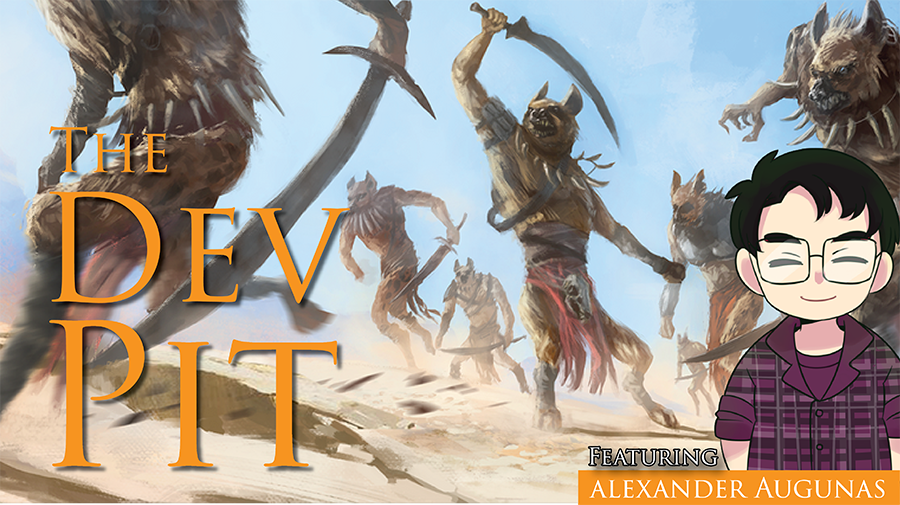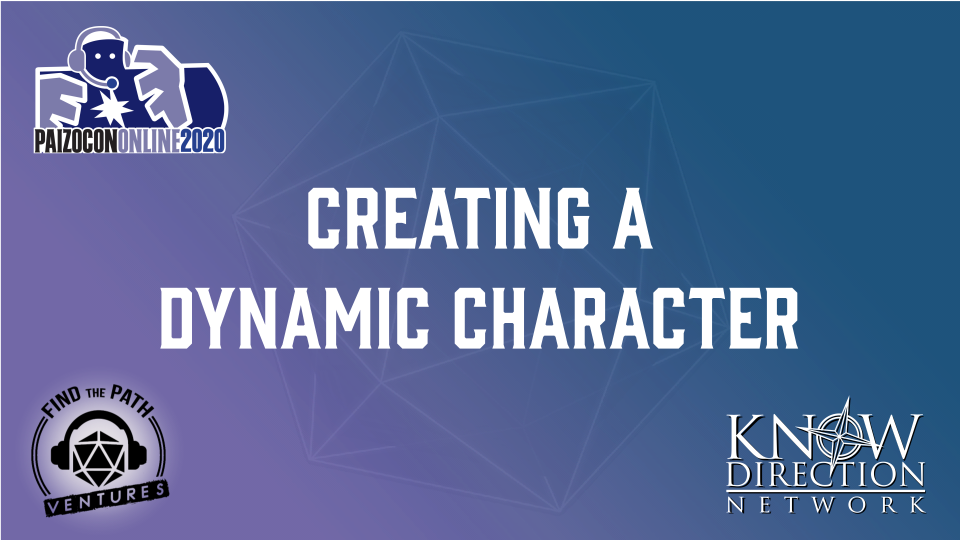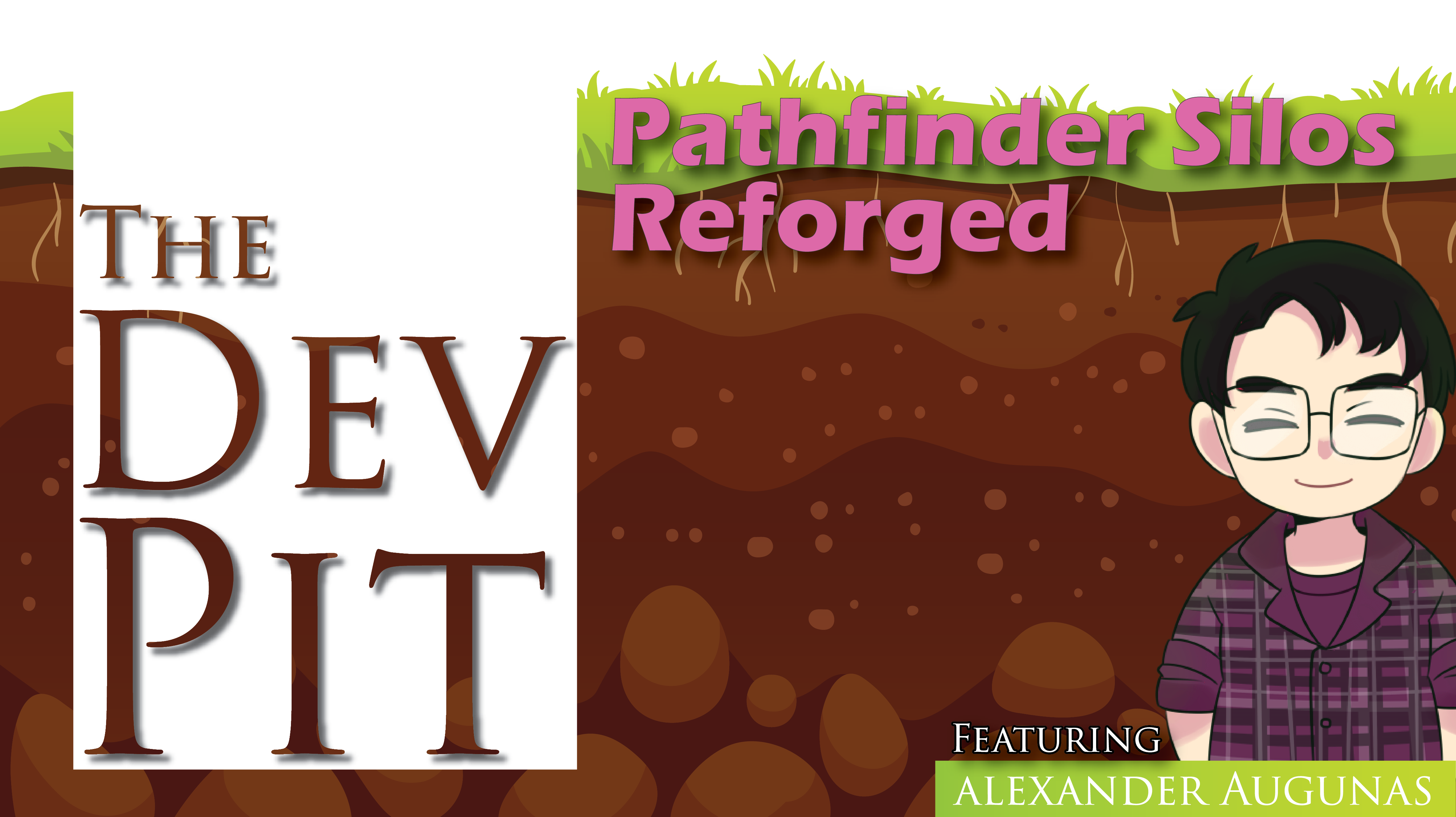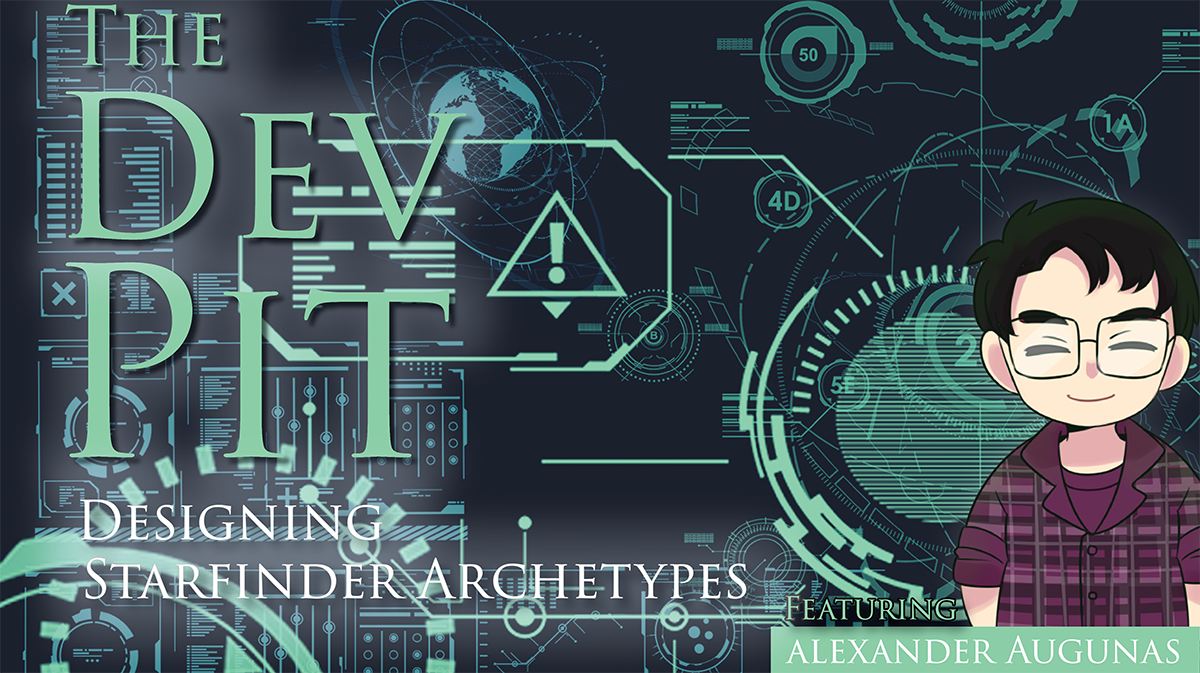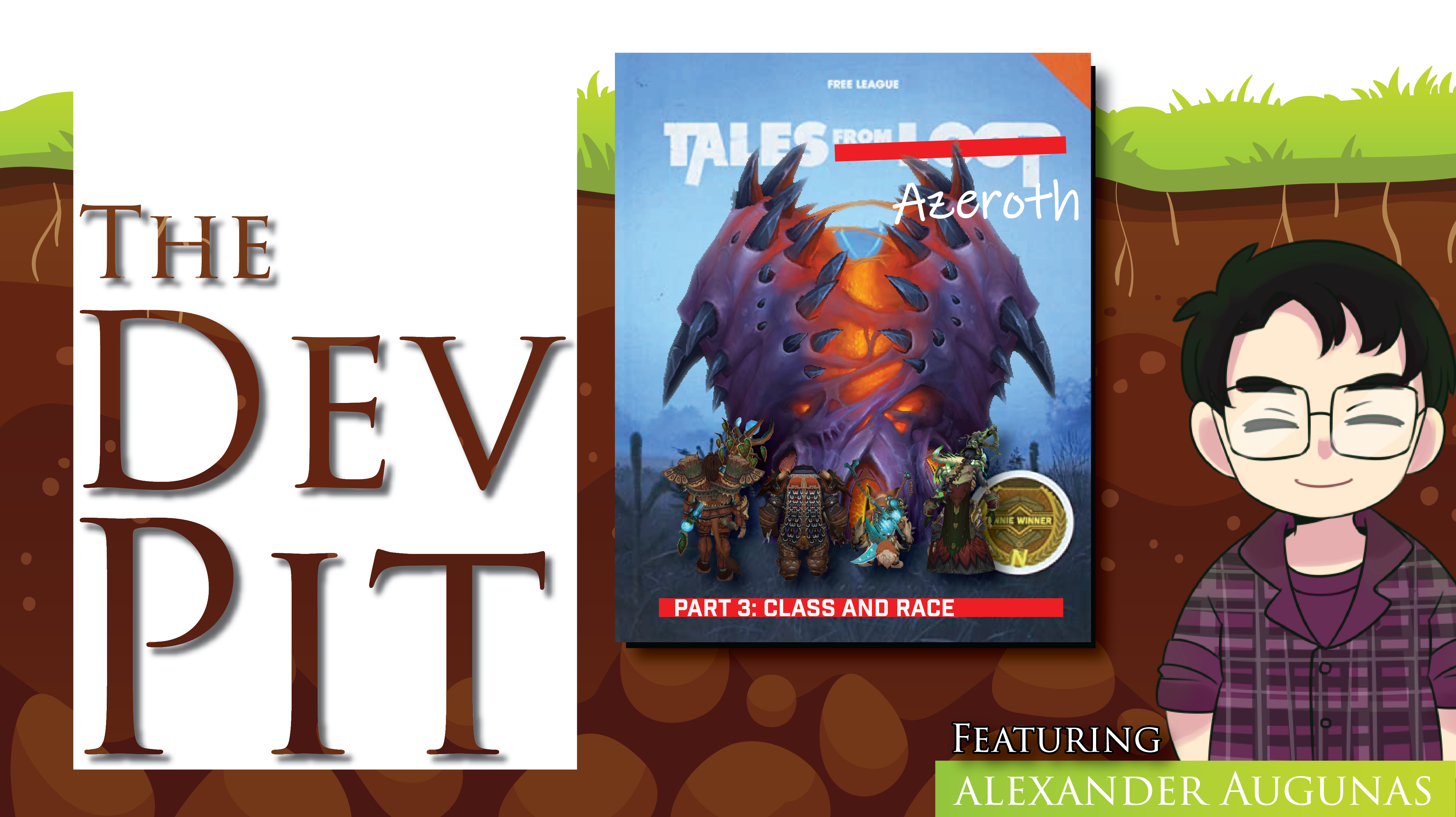Gnolls in 5E and Pathfinder
Before we really get into what I like about gnolls, let’s talk about how they’re portrayed in Pathfinder and Fifth Edition. The two sources I’m going to be looking at are Volo’s Guide to Monsters (5E) and the Monster Codex (PF1).
- Volo’s Guide to Monsters: “Wherever the demon lord Yeenoghu enters the Material Plane and goes on a rampage, he leaves a great trail of corpses in his wake. As the Lord of Savagery despoils the land, packs of hyenas trail him and feast on the victims until the dead flesh of Yeenoghu’s prey leave them bloated and unable to move. Then, in a shower of blood and gristle, the hyenas transform into gnolls, which take up Yeenoghu’s awful mission to kill and destroy anything in their path. As creatures that sprang up in the wake of a demon lord, gnolls are creatures of savage blood lust, incapable of understanding or acting on any other impulse. They are extensions of Yeenoghu’s will. They pause only to devour what they have killed, and to fashion crude weapons and armor from the victim’s corpses.
- Monster Codex: Creatures primarily of the burning desert and arid plain, gnolls know that survival relies on the pack. The matriarch of the pack enforces simple rules of gnoll cohesion. The struggle is not from within the pack, but outside of it. That which is weaker than the gnoll is food. Rest ensures sufficient strength for the hunt. Bite off only what you can chew, saving the rest for the survival of the pack—but always claim your share. Raise whelps to be strong, and discard the weak. Any creature that is not part of the pack is nothing more than moving meat. Even when a gnoll pack serves a powerful master from outside the pack, it does so with only its own survival in mind, and it quickly abandons that master if continued service would be suicidal. Other races might look down on the gnolls as selfish, lazy, and ultimately destructive, but gnolls merely cackle at such judgments. For gnolls, survival is the only morality, and eating one’s enemies is the ultimate display of power. The gnoll pack is a multilayered structure based on competing for dominance, with one alpha—typically the largest and most powerful female gnoll—at its apex. Rarely, a group of packs can mesh in an even more complex and ever shifting hierarchy in order to create a tribe or horde. This happens only when they’re led by an extremely powerful leader, be it an alpha gnoll or a bullying outsider who can understand and manipulate the ever-shifting sands of gnoll dominance. Gnolls respect power and the ruthlessness to wield it successfully more than they do birth or station. A gnoll holds power over a pack because he or she is feared and revered, and only as long as he or she remains so. Because of this, when a pack leader dies, becomes infirm, or loses face, authority changes hands after a brief and bloody scramble for power between any gnolls with a thirst for power and the ability to assert dominance. Such scrambles for ascension often splinter a pack, as failed would-be alphas and their supporters are chased from the pack. This can create powerful rivalries between splintered packs, but often the ejected gnolls leave their pasts behind and pursue the hunt in new lands, attempting to build a new power base through increased breeding and rampaging hunts for new prey.
The Good, the Bad, and the Gnolly.
So when you’re revising content to suit your tastes better, it can be helpful to figure out the things you really like and the things you really don’t like because it helps you keep the content you’re working on true to your vision. Allow me to show you:
The Good
- Gnoll society is led by the biggest, strongest gnolls and it’s usually a female gnoll. (I like this because female hyenas are larger than male ones in the real world, so it feels authentic to me.)
- Gnoll society is a meritocracy, specifically “how powerful you are.” (I imagine that displaying your power means showing off your deeds, which is fundamentally a meritocracy.)
- Many gnolls worship demons.
- Gnoll society is heavily focused on survival, especially on acquiring food.
The Bad
- Gnolls leave to serve a demon lord’s vision of destruction.
- Gnolls rarely organize in groups larger than a Horde.
I think a lot of what makes gnolls cool is how they apply the general principals of real-world hyena behavior (which is fascinating) to a humanoid society, a Paizo invention. I think a lot of what makes gnolls less cool is when they’re diminished simply to fill their role as a low-to-mid tier enemy that can’t be organized. It’s also arguably racist; gnolls even more so than orcs tend to get coded with African dress and garb because the animal they’re based on (hyenas) are native to Africa, so when you’re saying that the ancestral people of a land that’s basically fantasy Africa lacks the capacity to outgrow tribal life and is only concerned with eating and hunting and maybe a little cannibalism and … yeah you see where I’m going with this.
That being said, it isn’t wrong to make gnolls into antagonists. But it needs to be done with complexity and depth, and neither of these descriptions have either. So how do we add some extra complexity? Well, research is a great way to start, and what better place to look that the real-world animal that gnolls are based on: the hyena. Here’s a fascinating article I found on hyenas with zero effort. Now, take a minute or two and read the article. Don’t worry, this is prewritten; I can wait for you as long as you need.
…
…
…
Okay? You all read? Perfect! Let me show you some of the snippets from this article that really started getting my creative juices flowing.
- Nor do things improve much when it comes to mating. “With most animals, males duke it out and the winner gets the girls,” says Holekamp. “But with hyenas, females have 100 percent say.” They decide when and under what conditions they will tolerate deferential sperm donors. At age 2 or 3 a male leaves his natal clan and wanders off to beg acceptance into another clan. After vicious rejections, he eventually succeeds and reaps his reward: brutal harassment as the clan’s nadir, one of the last in line for food and sex. This probation, which biologists call “endurance rivalry,” is a test, Holekamp explains: “The guy who can stick it out the longest wins.” The trial lasts about two years, after which some females may grant him access. “You do not want to be a male hyena,” Holekamp says.
-
“Most hyenas die violently, from lions or people,” says Holekamp, “but Bracket Shoulder died at 17 of kidney failure. And she was still in power.” She still had perfect teeth, too, since her rank assured her the best cuts of meat, whereas the teeth of lower-ranking animals get chipped and worn from crunching bones.
-
Holekamp thinks hyenas’ favorite food is fresh zebra—she’s seen them bypass easier prey in hopes of a striped entree—but they will eat anything with fur, feathers, wings or scales. Holekamp was once puzzled by a group of hyenas that seemed to be grazing; they were licking a bloom of caterpillars off the grass. After a rain, when termites shoot out of their mounds like fountains, hyenas stand over the holes and guzzle.
-
She is collaborating with a microbiologist at Michigan State to study hyenas’ hardy immune systems. Other species suffer pandemics (rabies in wild dogs, distemper in lions, anthrax in ungulates), but hyenas appear to be unscathed by disease, not to mention rotten meat. “How do they tolerate foods that most creatures find deadly?” Holekamp is still trying to figure that one out.
-
A cub named Figaro, young enough to still have black fur, emerges from the den and gets licked all over by its mother, Carmencita. Bigger cubs with new spots—they start to lose their black baby fur at six weeks of age—boil out of the den and romp around, pawing and nipping each other. One of them grabs Figaro by the ear and pulls the small cub over. The other three play tug of war with a stick, rehearsal for future battles over a topi’s haunch or a gazelle’s torso. An older cub nudges a sleeping female named Fluffy, who jerks her head, a warning. The cub jumps back but tries again, shoving its head into Fluffy’s belly. “She’s managing to introduce herself,” says Holekamp.
-
Hyenas have a complex behavioral language. Casual hellos include nuzzles, muzzle licks and body rubs. More formally, and nervously, a subordinate animal will lift its hind leg to expose its erect penis or pseudopenis for the dominant animal to sniff or lick. Other deferential gestures include giggling, head-bobbing and groveling. Males are the principal appeasers, says Holekamp, “because they stand to lose a lot”—status, access to food and mating—”if their relationship with the girls gets messed up.”
-
“Poor Fluffy,” says Holekamp. “She’s just lying there, and this teenager picks a fight, then forms a coalition with another kid. Teenagers are insecure about their rank so they’re always trying to prove it. Girls are particularly tenacious, because if they lose their rank, it can have lifelong consequences, so they’re constantly picking fights.”
-
Cubs enter life with their eyes open and some of their teeth erupted, and within minutes siblings are fighting one another to establish dominance. The mother has only two nipples; in a litter of three, the least aggressive cub will usually starve. Cubs inherit their mother’s rank, and the higher it is, the more likely her cubs will reach adulthood and reproduce: status ensures powerful allies, extra protection and a bigger share of the food. A recent study by Holekamp and her colleagues suggests that status begins in the womb. They discovered that in the final weeks of pregnancy, high-ranking females produce a flood of testosterone and related hormones. These chemicals saturate the developing cubs—both males and females—and make them more aggressive. They’re born with a drive to dominate, which presumably helps them uphold their matrilineal status. By contrast, a pregnant subordinate female produces a smaller spike of hormones, and her descendants become subservient. Holekamp says this is the first evidence in mammals that traits related to social status can be “inherited” through a mother’s hormones rather than genetics.
-
The skull and jaws that make bone-crushing possible take several years to mature. Holekamp has found that young hyenas can barely crunch dog biscuits. Hyena mothers care for their cubs for three or four years, much longer than most other predators do. Alone, cubs would be unable to compete for food at kills. “That put pressure on females to give their kids more time at the carcass,” says Holekamp. Females had to become bigger and meaner, Holekamp hypothesizes, which they achieved partly by boosting their “masculinized” hormones. If Holekamp is right, female dominance and matriarchy among spotted hyenas stem from evolutionary adaptations made for the sake of feeding the kids.
Isn’t this a TON of cool information? We can absolutely use this to rewrite gnolls with a far more interesting culture then “generic bad guy.”
Rewriting Gnoll Culture
So let’s take a minute to pull some of the information from all those paragraphs I posted above. We’ll take that information and try to turn the cool parts into something gnolls can use.
Nor do things improve much when it comes to mating. “With most animals, males duke it out and the winner gets the girls,” says Holekamp. “But with hyenas, females have 100 percent say.” They decide when and under what conditions they will tolerate deferential sperm donors. At age 2 or 3 a male leaves his natal clan and wanders off to beg acceptance into another clan. After vicious rejections, he eventually succeeds and reaps his reward: brutal harassment as the clan’s nadir, one of the last in line for food and sex. This probation, which biologists call “endurance rivalry,” is a test, Holekamp explains: “The guy who can stick it out the longest wins.” The trial lasts about two years, after which some females may grant him access. “You do not want to be a male hyena,” Holekamp says.
- Gnolls are kicked out of their birth clans and are expected to submit to a different clan. These gnolls are placed at the bottom of their clan’s heirarchy and have to slowly climb their way up over 2 years. This practice is intended to instill the upmost loyality in the gnolls forced to leave their homes; they have no choice other than to climb the gnoll social ladder.
“Most hyenas die violently, from lions or people,” says Holekamp, “but Bracket Shoulder died at 17 of kidney failure. And she was still in power.” She still had perfect teeth, too, since her rank assured her the best cuts of meat, whereas the teeth of lower-ranking animals get chipped and worn from crunching bones. Holekamp thinks hyenas’ favorite food is fresh zebra—she’s seen them bypass easier prey in hopes of a striped entree—but they will eat anything with fur, feathers, wings or scales. Holekamp was once puzzled by a group of hyenas that seemed to be grazing; they were licking a bloom of caterpillars off the grass. After a rain, when termites shoot out of their mounds like fountains, hyenas stand over the holes and guzzle. She is collaborating with a microbiologist at Michigan State to study hyenas’ hardy immune systems. Other species suffer pandemics (rabies in wild dogs, distemper in lions, anthrax in ungulates), but hyenas appear to be unscathed by disease, not to mention rotten meat. “How do they tolerate foods that most creatures find deadly?” Holekamp is still trying to figure that one out.
- Gnolls can and will eat literally anything, but they save the best meals for higher-ranking members of the community. These gnolls tend to have better teeth because they’re not forced to eat harder foods. They might be immune or heavily resistant to ingested poison and/or ingested diseases.
A cub named Figaro, young enough to still have black fur, emerges from the den and gets licked all over by its mother, Carmencita. Bigger cubs with new spots—they start to lose their black baby fur at six weeks of age—boil out of the den and romp around, pawing and nipping each other. One of them grabs Figaro by the ear and pulls the small cub over. The other three play tug of war with a stick, rehearsal for future battles over a topi’s haunch or a gazelle’s torso. An older cub nudges a sleeping female named Fluffy, who jerks her head, a warning. The cub jumps back but tries again, shoving its head into Fluffy’s belly. “She’s managing to introduce herself,” says Holekamp.
-
Gnolls are born with black fur that lightens as they age.
Hyenas have a complex behavioral language. Casual hellos include nuzzles, muzzle licks and body rubs. More formally, and nervously, a subordinate animal will lift its hind leg to expose its erect penis or pseudopenis for the dominant animal to sniff or lick. Other deferential gestures include giggling, head-bobbing and groveling. Males are the principal appeasers, says Holekamp, “because they stand to lose a lot”—status, access to food and mating—”if their relationship with the girls gets messed up.” “
Poor Fluffy,” says Holekamp. “She’s just lying there, and this teenager picks a fight, then forms a coalition with another kid. Teenagers are insecure about their rank so they’re always trying to prove it. Girls are particularly tenacious, because if they lose their rank, it can have lifelong consequences, so they’re constantly picking fights.”
- Gnoll adolescents are under a lot of pressure to perform. If they lose their rank, it has lifelong consequences for them. Gnolls who are already low-ranking have to perform subordinate, deferential behaviors in order to appease their betters, or they lose status
Cubs enter life with their eyes open and some of their teeth erupted, and within minutes siblings are fighting one another to establish dominance. The mother has only two nipples; in a litter of three, the least aggressive cub will usually starve. Cubs inherit their mother’s rank, and the higher it is, the more likely her cubs will reach adulthood and reproduce: status ensures powerful allies, extra protection and a bigger share of the food. A recent study by Holekamp and her colleagues suggests that status begins in the womb. They discovered that in the final weeks of pregnancy, high-ranking females produce a flood of testosterone and related hormones. These chemicals saturate the developing cubs—both males and females—and make them more aggressive. They’re born with a drive to dominate, which presumably helps them uphold their matrilineal status. By contrast, a pregnant subordinate female produces a smaller spike of hormones, and her descendants become subservient. Holekamp says this is the first evidence in mammals that traits related to social status can be “inherited” through a mother’s hormones rather than genetics.
The skull and jaws that make bone-crushing possible take several years to mature. Holekamp has found that young hyenas can barely crunch dog biscuits. Hyena mothers care for their cubs for three or four years, much longer than most other predators do. Alone, cubs would be unable to compete for food at kills. “That put pressure on females to give their kids more time at the carcass,” says Holekamp. Females had to become bigger and meaner, Holekamp hypothesizes, which they achieved partly by boosting their “masculinized” hormones. If Holekamp is right, female dominance and matriarchy among spotted hyenas stem from evolutionary adaptations made for the sake of feeding the kids.
- Gnolls are naturally competitive, but their upbringing is the larger predictor in how their behaviors develop. Gnoll parents are taught that they have to instill aggressive competition in their younglings if they’re to survive. Gnolls born to mothers with rank generally fare better than those who don’t.
- We will NOT be keeping these ideas of “social status can be inherited.” That is icky and gross when you’re talking about a humanoid species that you have to give agency to.
Putting it All Together
With all this research and repurposing done, here’s what I came up with. Enjoy!
- Physically, female gnolls are larger than male gnolls and are equally endowed. Outsiders tend to confuse gnoll society as matriarchal, but this isn’t true. Gnoll society possesses a rigid heirarchy that is part communism and part meritocracy, with the strongest members of the pack inheriting the lion’s share of resources. Assigned-female-at-birth gnolls tend to rise higher in their packs not because they were AFAB, but because female gnolls tend to be larger and more physically powerful than AMAB gnolls.
- Children have a special place in gnoll society; while gnolls encourage their children to compete with one another and develop their own heirarchy among the pups, to adults all children hold the same rank and are incredibly important, getting first choice of most essentials needed to survive. This grace period ends as soon as the gnoll becomes an adult, however, and the younglings are quickly put in their place at the bottom of the pack’s heirarchy as a rite-of-passage ceremony or are unceremoniously exiled from it. Exilement of the young almost never leads to a pack’s death because all clans exile their young in this manner as a means of reorienting them at the bottom of their pack’s hierarchy, so young exiles constantly seek admittance to every gnoll pack.
- Those raised in gnoll culture apply this brutal way of thinking to their interactions with other cultures, often seeing others as being inherently weaker due to their lack of commitment to enforcing order through strength.
So, what did you think? Is there anything you’d have done differently or wish I had said or elaborated on? Do you see any problems in my work? Leave your comments below and shoot us a message on Discord. Until next time, I’m Alexander Augunas and this has been the Dev Pit!
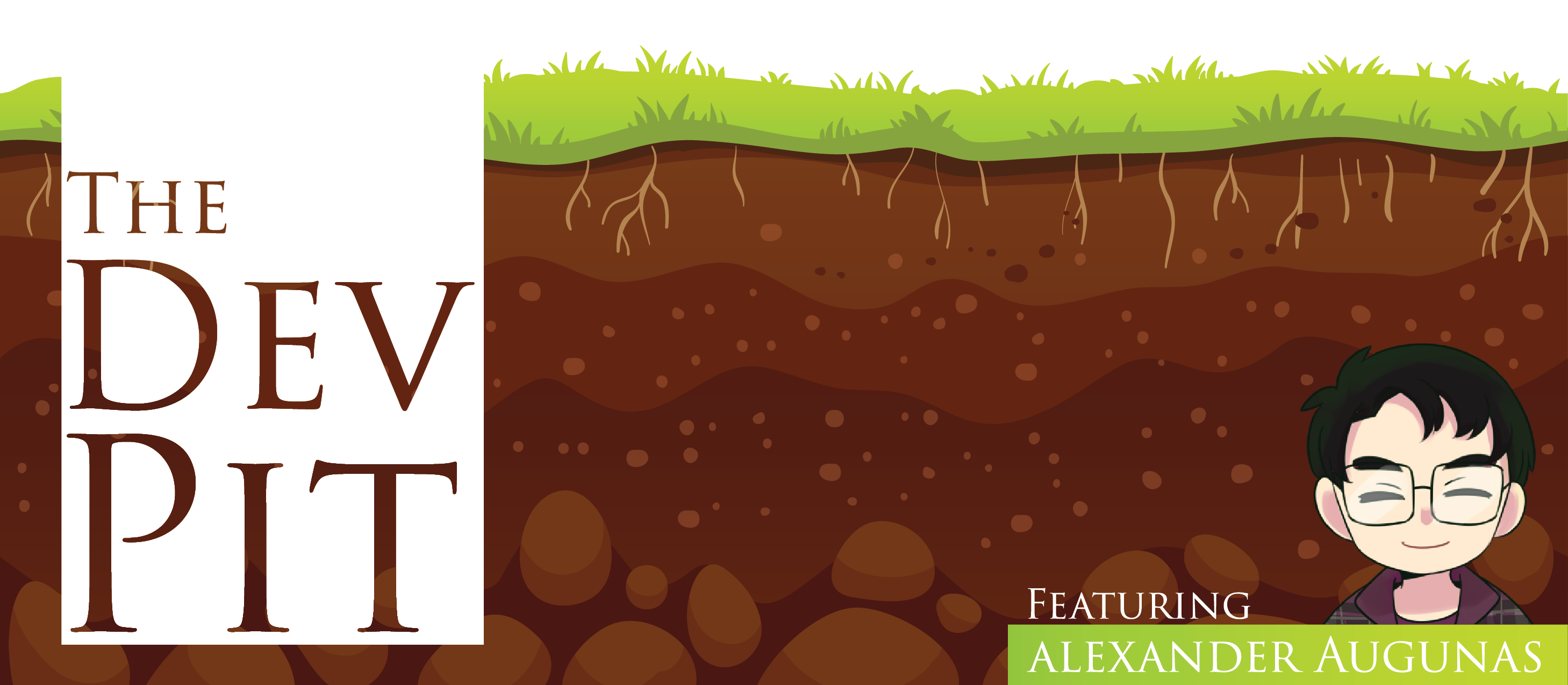
Alexander “Alex” Augunas, the Everyman Gamer, has been playing Tabletop Roleplaying Games since 2007 after a friend pretended to be his father in order to smuggle him out of high school so his gaming group had enough people to run a module. Today, Alex is the owner and publisher of Everybody Games, a co-host on Know Direction: Beyond and RPG Design Club, and a player on Stellar. You can follow Alex’s exploits on Twitter (@AlJAug), on Facebook, or on Patreon. Know Direction fans are also welcome to “@Alex” him on the Know Direction discord server!

